Destination Styria, Austria
Green. If there were one color to describe Styria, it would be this. Lush and fresh — just like the logo of this state in southern Austria: the green heart. This heart, or rather, heartfelt warmth and passion, comes alive in a special way in Styria’s diverse culture of culinary enjoyment.
Glaciers and alpine terrain, mountains and hills, lakes and rivers — the landscape of Styria, one of Austria’s nine federal states, borders Slovenia to the south and is known for its remarkable variety. It has plenty to offer — whether for sports enthusiasts, culture lovers, or especially for gourmets.
Between Rugged Cliffs and Genuine Hospitality
We begin our journey through Styria in the north of the state, where the Dachstein massif rises with its imposing rock formations and glacier. Not far away lies the Ausseerland, where cool waters teem with fine fish, above all the char for which the region is famous.
We head up to the Geiger Alm to be treated by Dominik and Eva-Maria Utassy. They have turned this historic alpine hut, with its rustic charm, into a gourmet hotspot thanks to their creative regional cuisine and especially warm service.
Crossing over mountain ranges and the Gesäuse National Park, through lush green forests — which cover more than 61% of Styria, making it Austria’s most forested state — we reach our next stop: Mariazell. This is Austria’s most important pilgrimage site, with its impressive basilica.
In a quiet side valley, accessible only by gravel road, is the Lurgbauer. In the restaurant and adjoining farm run by Maximilian and Karin Leodolter, everything revolves around the meat from their own Aberdeen Angus oxen and pasture-raised veal. With a clear culinary style, they serve a product-focused cuisine — a creative reinterpretation of traditional Austrian beef dishes.
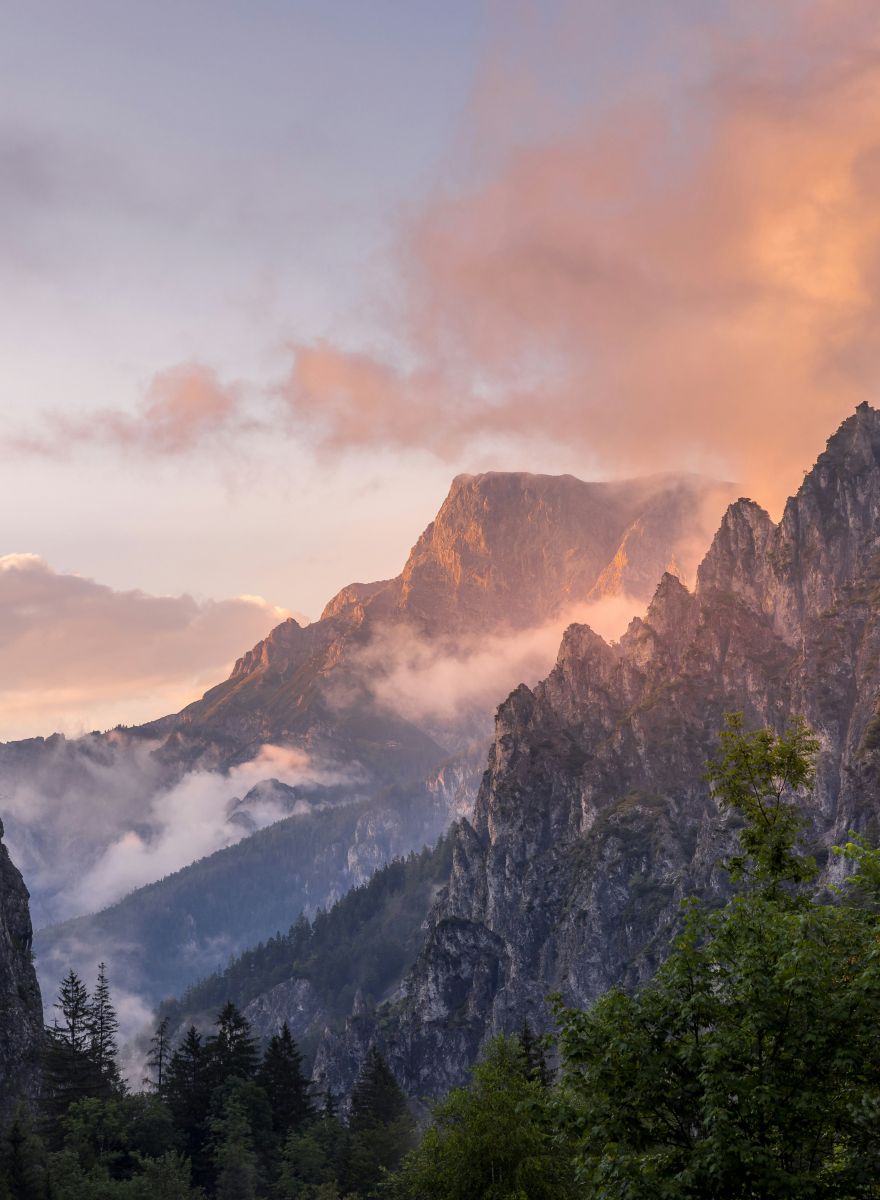
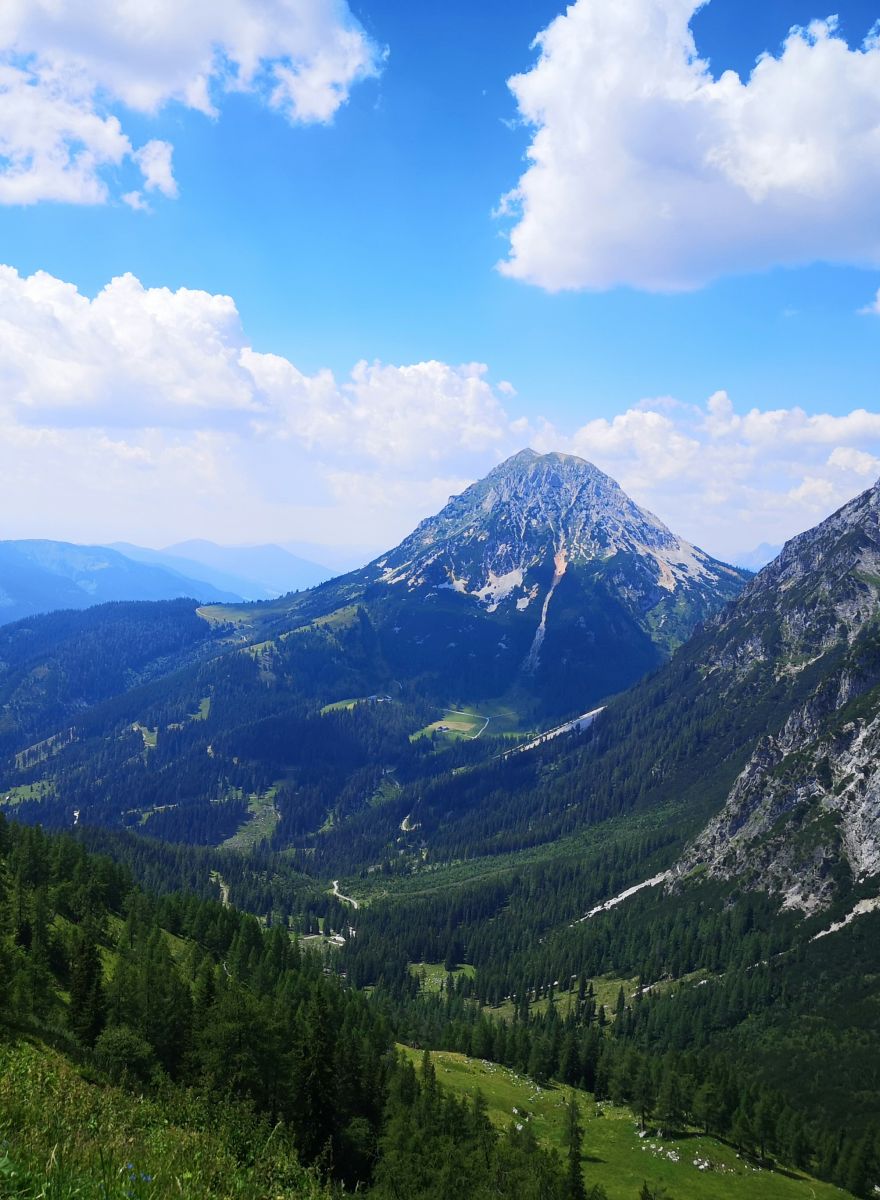
Tasting Local Character
We continue through the Mürztal to Langenwang, where we visit Andreas Krainer at his Hotel Restaurant Café Krainer. As a true “Steirerbua” (Styrian lad), Krainer is deeply connected to the region and its products. He has built an impressive network of suppliers, many of whom he considers friends. Provenance plays a central role in his “Forest & Homeland Menu” — modernity and tradition come together here in a truly unique way.
“Our plates are a stage for local agriculture.”
In Bruck an der Mur, the Mürz and Mur valleys meet. This so-called Mur-Mürz furrow is still significant for iron ore mining and the steel industry. The Erzberg remains the largest open-pit mine in Central Europe and is also a popular and impressive excursion destination.
On our way south, we stop by Stefan Eder and Eveline Wild at their family-run Hotel & Restaurant der WILDe EDER in St. Kathrein am Offenegg, situated in the Almenland Nature Park. “Regional, global, and always with refined lightness,” is how Stefan Eder describes the philosophy of their restaurant ZeitRAUM, where award-winning pastry chef, confectionery world champion, and TV chef Eveline Wild adds extraordinary sweet accents.
A City with Many Facets
Our tour passes meadows and fields where special products grow, one even named after the state capital itself: the Grazer Krauthäuptel, a type of lettuce. The city of Graz is at least as “crisp” as its namesake salad — young and shaped by student life, the metropolis on the Mur exudes a dynamic vibe.
Modern architecture, such as the Kunsthaus or the spectacular Murinsel floating in the river, stands in dialogue with the historical, baroque face of the city. Towering above it all is the distinctive Schlossberg with its clock tower, the city’s landmark. The climb is always worthwhile — for less ambitious “mountaineers,” there’s an elevator or funicular. At the top, you’re rewarded not only with a stunning panorama but also with cozy garden restaurants. Culture and art are everywhere in Graz — even on the plates of Philipp Dyczek. In his restaurant Artis, the name says it all: his “Menu Surprise” is culinary artistry at the highest level, presented like a painting.
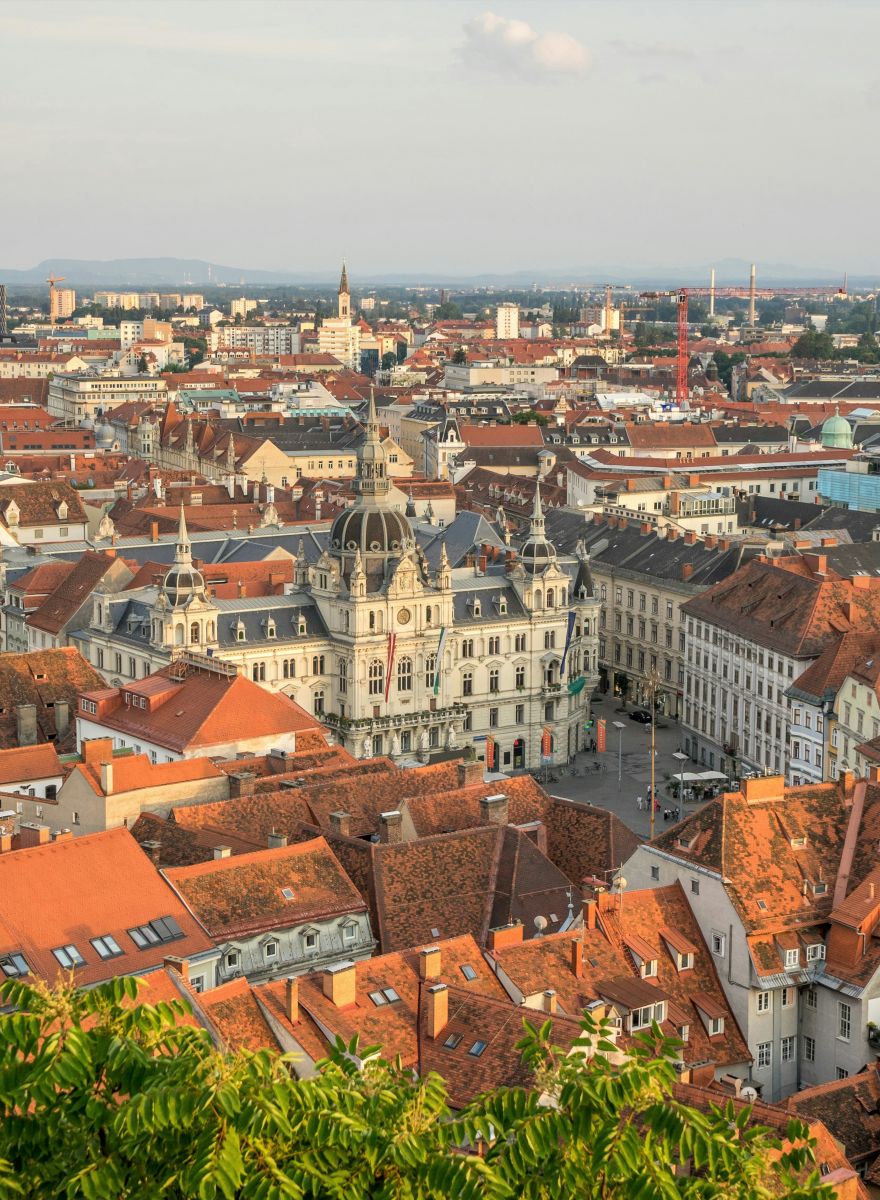
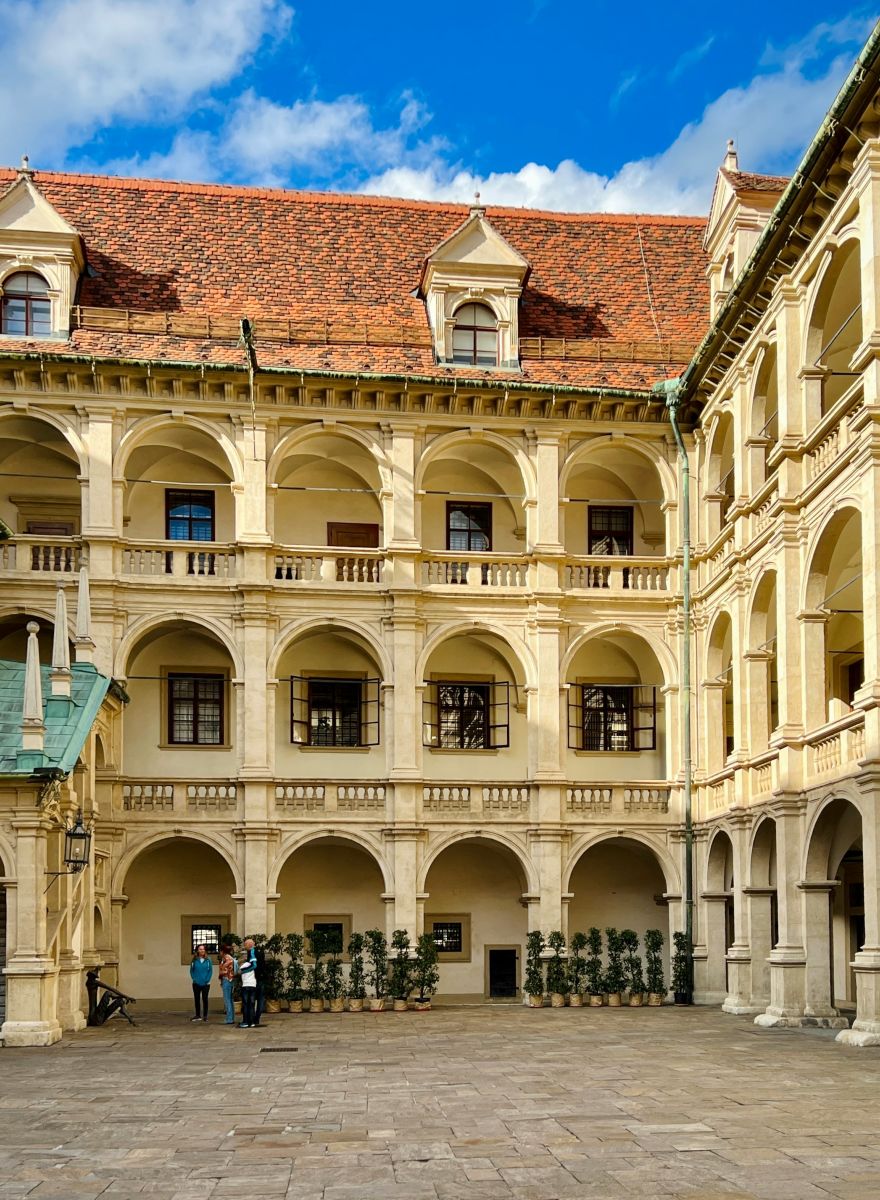
Styrian Specialties
Following the course of the Mur, the landscape transitions into gentle hills — fertile ground for the most famous Styrian specialty: the pumpkin, whose seeds are pressed into the “green gold.” Pumpkin seed oil is omnipresent in local cuisine, lending its distinctive nutty aroma to salad dressings and savory dishes, and even appearing in desserts.
A must-try: vanilla ice cream with pumpkin seed oil.
Just like the oil — the Ölmühle Fandler in Pöllau offers a particularly extensive, high-quality range of gourmet oils — Styrian apples are also a genuine export hit. They form the basis for the fine vinegars by Alois Gölles, who is renowned far beyond Styria’s borders for his exquisite spirits. In Riegersburg, he has created a gourmet empire that his son David contributes to with his own line of whiskey, gin, and rum.
The town of Riegersburg is also famous for its “sweet side.” Josef Zotter is considered a pioneer of fairly produced, hand-crafted chocolate in extraordinary flavor combinations — reportedly over 500. Some call this tireless creative, who makes chocolates with algae, caramel and pineapple, or even with blood and pork cracklings from his own pigs, a “madman” — but one with taste, and big visions, which he shares with visitors to his Zotter Experience World.
Where the Wine Grows
The green that runs through Styria takes the form of vineyards in the west, south, and southeast of the region, known as Vulkanland due to its geological history. The winemakers of STK (Steirische Terroir & Klassik Weingüter) are especially dedicated to this landscape and its uniqueness. This association stands for regional typicity and the highest quality, represented by its twelve members: Neumeister (Straden), Polz (Spielfeld), Tement (Ehrenhausen), Erwin Sabathi (Leutschach an der Weinstraße), Hannes Sabathi (Gamlitz), Winkler-Hermaden (Kapfenstein), Wohlmuth (Fresing), Gross (Ratsch a. d. Weinstraße), Lackner Tinnacher (Gamlitz), Wolfgang Maitz (Ratsch an der Weinstraße), Frauwallner (Straden) and Sattlerhof (Gamlitz).
At Sattlerhof in particular, you can see firsthand how excellently Styrian wines pair with the region’s top cuisine. While Anna Ferrand-Sattler is the passionate host at the Sattlerhof gourmet hotel, her brother Markus Sattler creates dishes influenced by Styria’s culinary heritage that are both imaginative and down-to-earth, resulting in remarkable taste experiences.
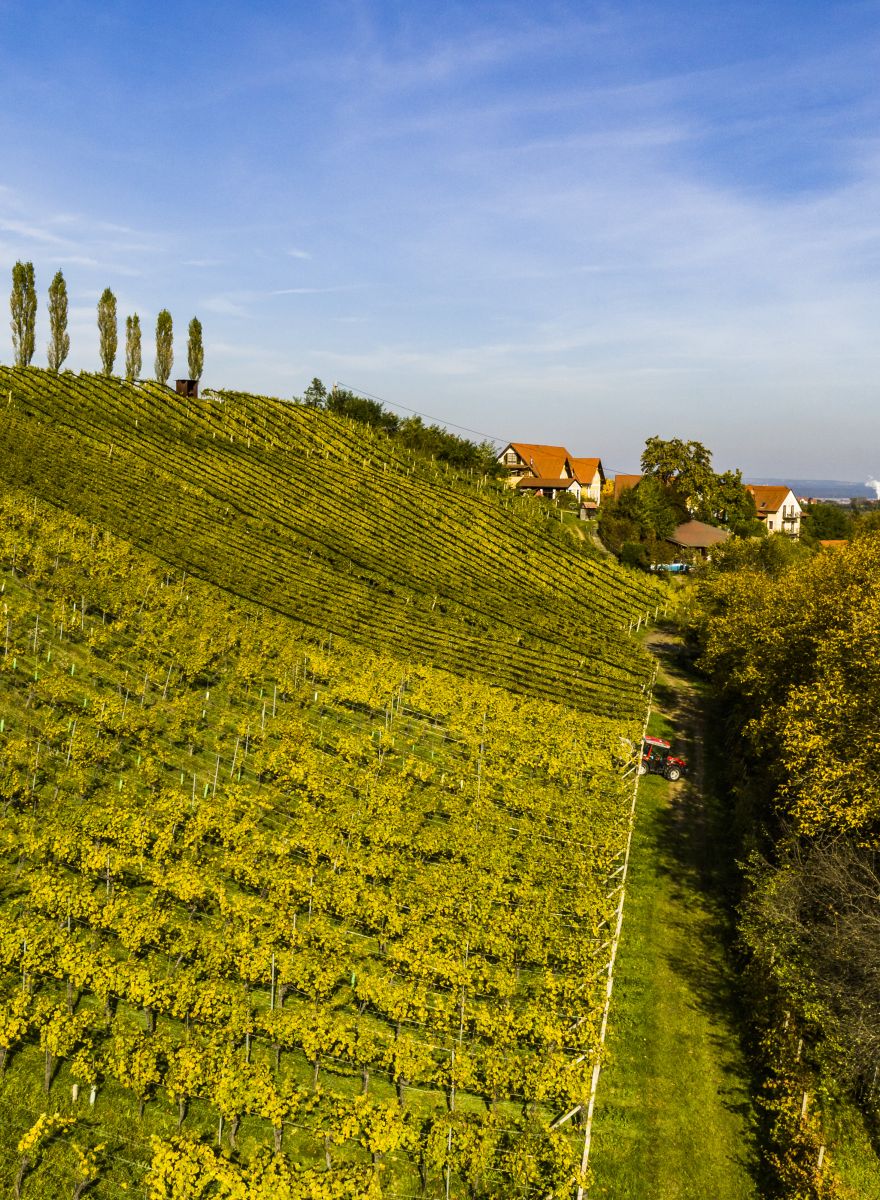
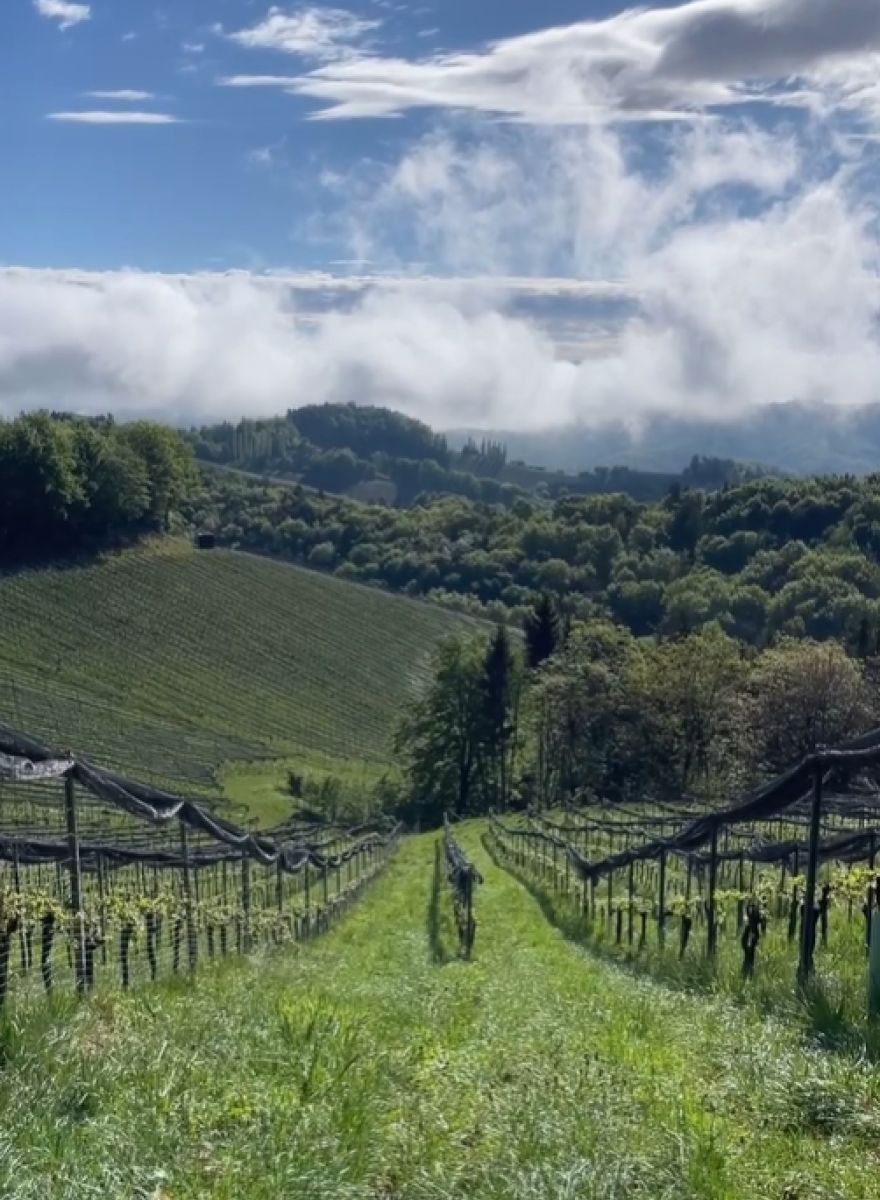
Down-to-Earth and Innovative
Speaking of family ties: the Rauch siblings stand for high-end cuisine like few other brother-sister duos, with their award-winning restaurant and Villa Rosa in Trautmannsdorf. Sonja Rauch creates a special feel-good atmosphere with expertise and charm, while Richard Rauch delights guests with a contemporary, regionally rooted interpretation of traditional Styrian cuisine.
Despite all their success — Richard Rauch was named Chef of the Year by Gault&Millau Austria back in 2015 — the Rauch siblings have never lost their down-to-earth nature. You can see this, for example, in their Instagram series “… but make it Sternekoch,” where they show a rapidly growing fan base how to prepare even a simple ham and cheese toast for gourmets.
For his delicious pork dishes, the chef likes to use meat from the nearby Genussgut Krispel. This family-run farm, operated with heart and dedication, offers not only excellent Mangalitsa pork, but also regional wines, fine delicacies, and cozy guest rooms for a longer stay.
Don’t overthink it — just enjoy.
Markus Rath is always good for a surprise. In his gourmet parlour at the Schlosskeller Südsteiermark, he offers surprise menus in five or seven courses, while the tavern serves classics like Styrian fried chicken or juicy roast pork. And — unconventional but all the better: every Wednesday in summer, there’s Neapolitan pizza, sometimes topped with summer truffle and pork cracklings. Amore!
Or better said: in Styria, the heart beats for enjoyment — in green.
